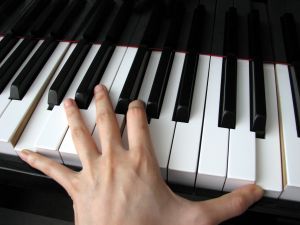

In about 1800, Joseph Smith of England made a complete frame of metal for resistance to strains. The framing was still wooden the iron frame had not yet been thought of. Mostly, pedals were worked by the knees but the foot pedal introduced in England was catching on. It then had a five-octave normal range and sixty-one keys not eighty-eight as it has today. (The first section was taken from “Theory & Practice of Piano Construction” by William White, the second section is from “Pianos and their Makers” by Alfred Dolge.Īs the 18th century drew to a close, the piano was firmly established as a musical instrument. This is a result of the order in which the whole tones and semi-tones are arranged, and has evolved over centuries.

As you can see, the modern keyboard has gone through many changes, however, the basic concept of the key lay-out has been fairly consistent. He aimed to follow the inclination of the human arm to move in a semicircle. About 1789, Neuhaus, a piano maker of Vienna, constructed a concave-formed keyboard for his pianos. Krause of Eisenberg constructed a keyboard in 1811, in which the semitones were not raised and all keys were of the same color.
#AMERICAN CRAFTSMAN AEOLIAN PLAYER PIANO PNEUMATIC PIANO FULL#
Since the development of the piano many experiments have been made with so-called “chromatic” keyboards, in which the semitones were on a level with the full tones. The semitones in most of those old instruments are elevated and of a different color than the full tones. Giuseppe Zarlino added the semitones to his instruments about 1548, but instruments of earlier date have the chromatic scale, as for instance the clavicymbala, some of which had 77 keys to a compass of four octaves.Īfter the 15th century nearly all the makers of key-stringed instruments used the chromatic scale practically as we find it in the modern piano. There are no reliable records in existence, as to who applied the chromatic scale first. Guido’s diatonic scale, eight full tones with seven intervals of which two were semitones, was used in the first claivchords, which had 20 keys. The great musical genius, Guido of Arezzo, applied the keyboard to stringed instruments in the first part of the 11th century. Next we learn that Emperor Constantine sent a musical instrument having keys to King Pepin of France in 757 A.D.

Vitruvius, in his work on architecture (1st century A.D.), describes an organ with balanced keys. In order to create “true diatonic” sounds required for the necessary intervals in all scales, there would have to be 66 notes to an octave! The piano utilizes a tuning format called “just intonation”, a system whereby we are able to command the expression of all the sounds that are required to be heard within the compass of an octave in order that the degrees of each and every possible scale may be correctly and exactly rendered. The piano is actually an instrument made up of compromises due to the fact that it is not capable of playing the full “chromatic” scale as it can be played on say, a violin.


 0 kommentar(er)
0 kommentar(er)
